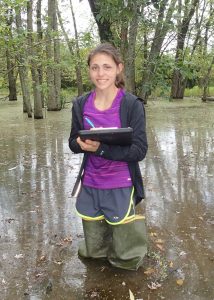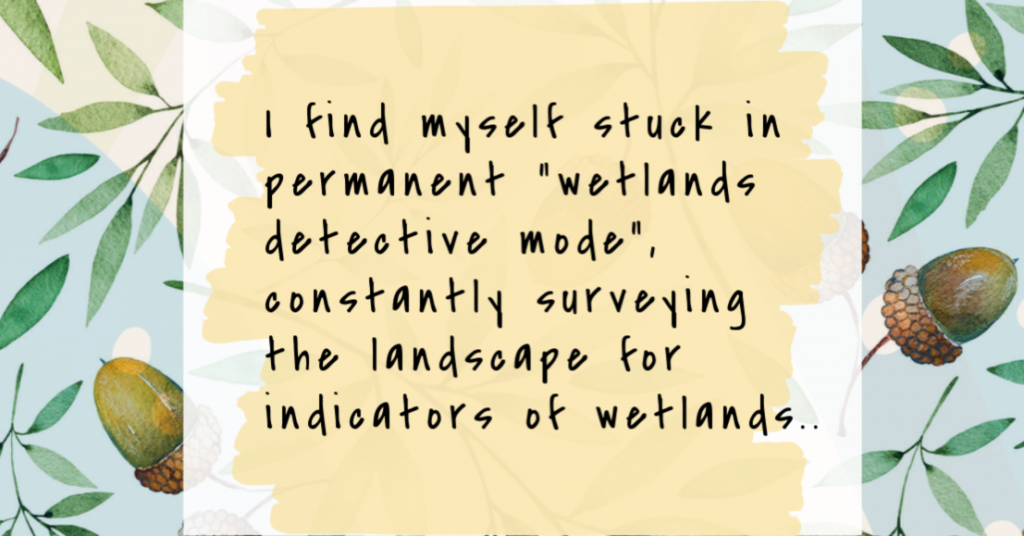
Facebook Twitter Instagram YouTube
Written on: September 16th, 2019 in Wetland Assessments
By Samantha Stetzar, University of Delaware

Wetlands work is not for the faint of heart. I won’t sugar coat it for you. Its dirty. Its messy. Oftentimes pretty buggy (even though we really lucked out this year). Yep. Wetlands can be all of those things. But – they are also so much more. I don’t think I’ve learned so much in one summer than I did working as a seasonal with DNREC’s Wetland Monitoring and Assessment team.
This year we focused primarily on wetlands in the Brandywine Watershed, or rather, the Piedmont region of Delaware. Since this watershed was so unique in that it contained elevation, topographical configuration allowing for seep wetlands to emerge, I got a closer look into how the protocol is adapted and modified. Due to the unique topography of the region, assessing these wetlands became more of a challenge in comparison to previous watersheds in relatively flat locations of Delaware. However, I welcomed the challenges!
Each and every site was a new adventure, whether it be trudging through an abandoned town – turned mitigation site to discover the most strangest depressions, or practically clawing our way up cliff-sides I never would have imagined existed in Delaware, and even trekking across a railroad bridge suspended 30 ft above a shallow creek . No matter what obstacle stood in our way, I was eager and ready. Through the whole summer I truly felt like a contributing member to part of a team working towards a goal much larger than ourselves.

I didn’t realize until a week out of the job just how much of a profound impact this position had on my outlook on life. I’ve become more positive, patient and resilient. Not to mention the amount of knowledge I’ve learned from the many experiences and my amazing team members. By the end of the summer I find myself stuck in permanent “wetlands detective mode”, constantly surveying the landscape for indicators of wetlands and quietly naming off species within the local plant communities (thanks for the help with scientific names!). But this has something to say about DNREC’s wetlands team and phenomenal monitoring and assessment program.
This position was as much as a learning experience as it was a job; and I’ve left with so much more than when I started. I only hope more people will have an opportunity to realize the amount time and hard work wetland scientists dedicate to protecting Earth’s remaining wild spaces.
It’s important that we continue to assess and monitor the remaining wetlands that we have in order to ensure their existence for future generations to come. So I urge you, if you ever do get a chance to go out with a wetlands scientist, dive right in, no questions asked – just make sure you have hip-waders on first! Not only will you return with a myriad of knowledge and a renewed sense of appreciation for the natural world, but the satisfaction of a hard day’s work. So get ready. It’s time to get comfortable with being uncomfortable!